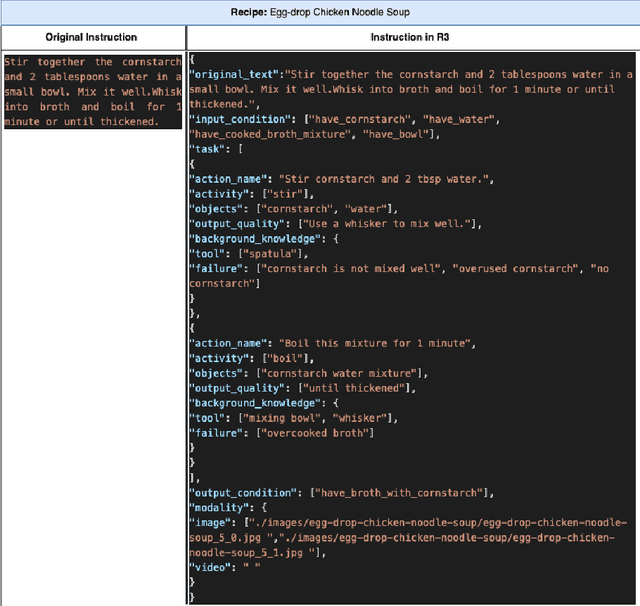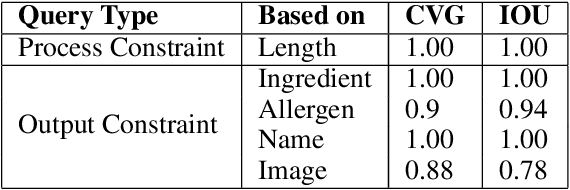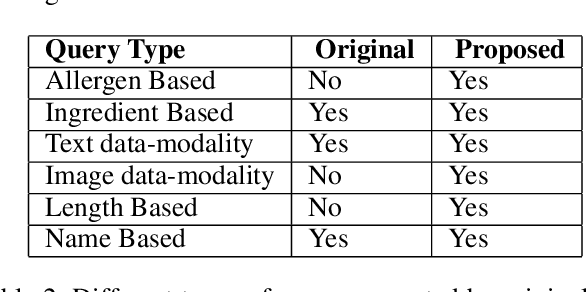Revathy Venkataramanan
NSF-MAP: Neurosymbolic Multimodal Fusion for Robust and Interpretable Anomaly Prediction in Assembly Pipelines
May 09, 2025Abstract:In modern assembly pipelines, identifying anomalies is crucial in ensuring product quality and operational efficiency. Conventional single-modality methods fail to capture the intricate relationships required for precise anomaly prediction in complex predictive environments with abundant data and multiple modalities. This paper proposes a neurosymbolic AI and fusion-based approach for multimodal anomaly prediction in assembly pipelines. We introduce a time series and image-based fusion model that leverages decision-level fusion techniques. Our research builds upon three primary novel approaches in multimodal learning: time series and image-based decision-level fusion modeling, transfer learning for fusion, and knowledge-infused learning. We evaluate the novel method using our derived and publicly available multimodal dataset and conduct comprehensive ablation studies to assess the impact of our preprocessing techniques and fusion model compared to traditional baselines. The results demonstrate that a neurosymbolic AI-based fusion approach that uses transfer learning can effectively harness the complementary strengths of time series and image data, offering a robust and interpretable approach for anomaly prediction in assembly pipelines with enhanced performance. \noindent The datasets, codes to reproduce the results, supplementary materials, and demo are available at https://github.com/ChathurangiShyalika/NSF-MAP.
AssemAI: Interpretable Image-Based Anomaly Detection for Manufacturing Pipelines
Aug 05, 2024Abstract:Anomaly detection in manufacturing pipelines remains a critical challenge, intensified by the complexity and variability of industrial environments. This paper introduces AssemAI, an interpretable image-based anomaly detection system tailored for smart manufacturing pipelines. Our primary contributions include the creation of a tailored image dataset and the development of a custom object detection model, YOLO-FF, designed explicitly for anomaly detection in manufacturing assembly environments. Utilizing the preprocessed image dataset derived from an industry-focused rocket assembly pipeline, we address the challenge of imbalanced image data and demonstrate the importance of image-based methods in anomaly detection. The proposed approach leverages domain knowledge in data preparation, model development and reasoning. We compare our method against several baselines, including simple CNN and custom Visual Transformer (ViT) models, showcasing the effectiveness of our custom data preparation and pretrained CNN integration. Additionally, we incorporate explainability techniques at both user and model levels, utilizing ontology for user-friendly explanations and SCORE-CAM for in-depth feature and model analysis. Finally, the model was also deployed in a real-time setting. Our results include ablation studies on the baselines, providing a comprehensive evaluation of the proposed system. This work highlights the broader impact of advanced image-based anomaly detection in enhancing the reliability and efficiency of smart manufacturing processes.
Cook-Gen: Robust Generative Modeling of Cooking Actions from Recipes
Jun 01, 2023Abstract:As people become more aware of their food choices, food computation models have become increasingly popular in assisting people in maintaining healthy eating habits. For example, food recommendation systems analyze recipe instructions to assess nutritional contents and provide recipe recommendations. The recent and remarkable successes of generative AI methods, such as auto-regressive large language models, can lead to robust methods for a more comprehensive understanding of recipes for healthy food recommendations beyond surface-level nutrition content assessments. In this study, we explore the use of generative AI methods to extend current food computation models, primarily involving the analysis of nutrition and ingredients, to also incorporate cooking actions (e.g., add salt, fry the meat, boil the vegetables, etc.). Cooking actions are notoriously hard to model using statistical learning methods due to irregular data patterns - significantly varying natural language descriptions for the same action (e.g., marinate the meat vs. marinate the meat and leave overnight) and infrequently occurring patterns (e.g., add salt occurs far more frequently than marinating the meat). The prototypical approach to handling irregular data patterns is to increase the volume of data that the model ingests by orders of magnitude. Unfortunately, in the cooking domain, these problems are further compounded with larger data volumes presenting a unique challenge that is not easily handled by simply scaling up. In this work, we propose novel aggregation-based generative AI methods, Cook-Gen, that reliably generate cooking actions from recipes, despite difficulties with irregular data patterns, while also outperforming Large Language Models and other strong baselines.
A Rich Recipe Representation as Plan to Support Expressive Multi Modal Queries on Recipe Content and Preparation Process
Mar 31, 2022



Abstract:Food is not only a basic human necessity but also a key factor driving a society's health and economic well-being. As a result, the cooking domain is a popular use-case to demonstrate decision-support (AI) capabilities in service of benefits like precision health with tools ranging from information retrieval interfaces to task-oriented chatbots. An AI here should understand concepts in the food domain (e.g., recipes, ingredients), be tolerant to failures encountered while cooking (e.g., browning of butter), handle allergy-based substitutions, and work with multiple data modalities (e.g. text and images). However, the recipes today are handled as textual documents which makes it difficult for machines to read, reason and handle ambiguity. This demands a need for better representation of the recipes, overcoming the ambiguity and sparseness that exists in the current textual documents. In this paper, we discuss the construction of a machine-understandable rich recipe representation (R3), in the form of plans, from the recipes available in natural language. R3 is infused with additional knowledge such as information about allergens and images of ingredients, possible failures and tips for each atomic cooking step. To show the benefits of R3, we also present TREAT, a tool for recipe retrieval which uses R3 to perform multi-modal reasoning on the recipe's content (plan objects - ingredients and cooking tools), food preparation process (plan actions and time), and media type (image, text). R3 leads to improved retrieval efficiency and new capabilities that were hither-to not possible in textual representation.
 Add to Chrome
Add to Chrome Add to Firefox
Add to Firefox Add to Edge
Add to Edge